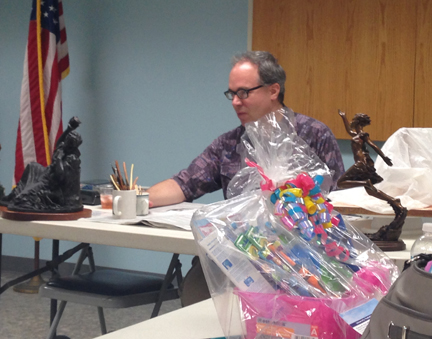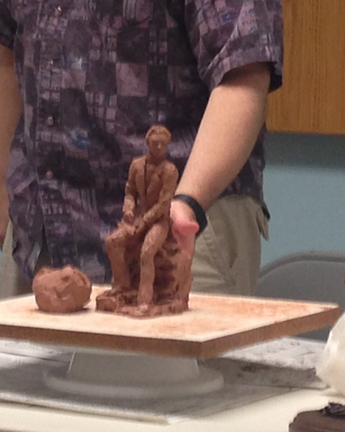Live Sculpture Demo
People who’ve been following my blog might be aware that I’ve done quite a few sculpture demonstrations. This past summer I had a chance to do another one. In this instance, the audience was the Orchard Park Business Connections group, a collection of entrepreneurs and professionals from a cross section of disciplines. The vast majority of my previous live art demonstrations have been for other artists. This meeting was a bit different, since these folks, generally speaking, weren’t artists.

In spite of their being newbies to the ins and outs of sculpture, the OPBC group members contributed many bright and meaningful comments and questions to the discussion and were thoroughly engaged in the presentation. I love this kind of participation since sculpture is a medium many people don’t get to see every day, especially taking place in real time. My audiences, whether artists or not, have, for the most part, been thoroughly entertained by the process and description of art-making at these events.
Some artists prefer to work in solitude, and I don’t mind this approach myself. However, from my days as a professional caricature artist right through these more recent live demonstrations, I’ve found that I actually enjoy “performing” in front of people, and am comfortable carrying on a conversation while working. This lends itself well to live instruction, since, at least in my opinion, a good demonstration consists of both artistic process and an ample portion of verbal instruction from the presenter.

Attendees enjoy getting to see samples of finished work and asking questions while witnessing a sculpture in progress. For this particular demo, I was working on a small figure maquette in oil based clay. Unlike some other more delicate compositions, this figure’s pose is such that no internal wire armature is required to support the clay. Not needing an armature tends to make the actual sculpting process much easier, since there are no supporting structures getting in the way of working on the piece from any angle. Smaller sculptures like this one make good demo pieces, since they’re easy to transport and can readily be spun around for the audience to see the progress taking place.
